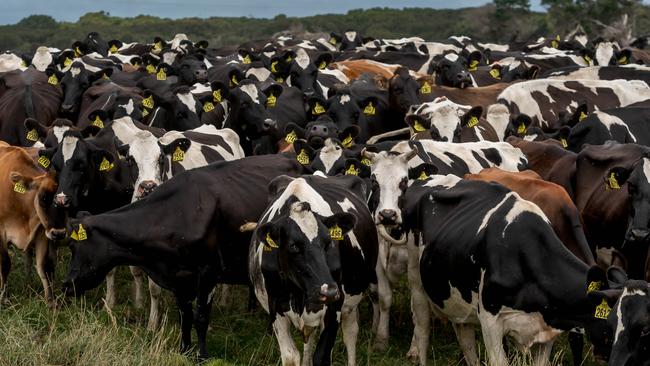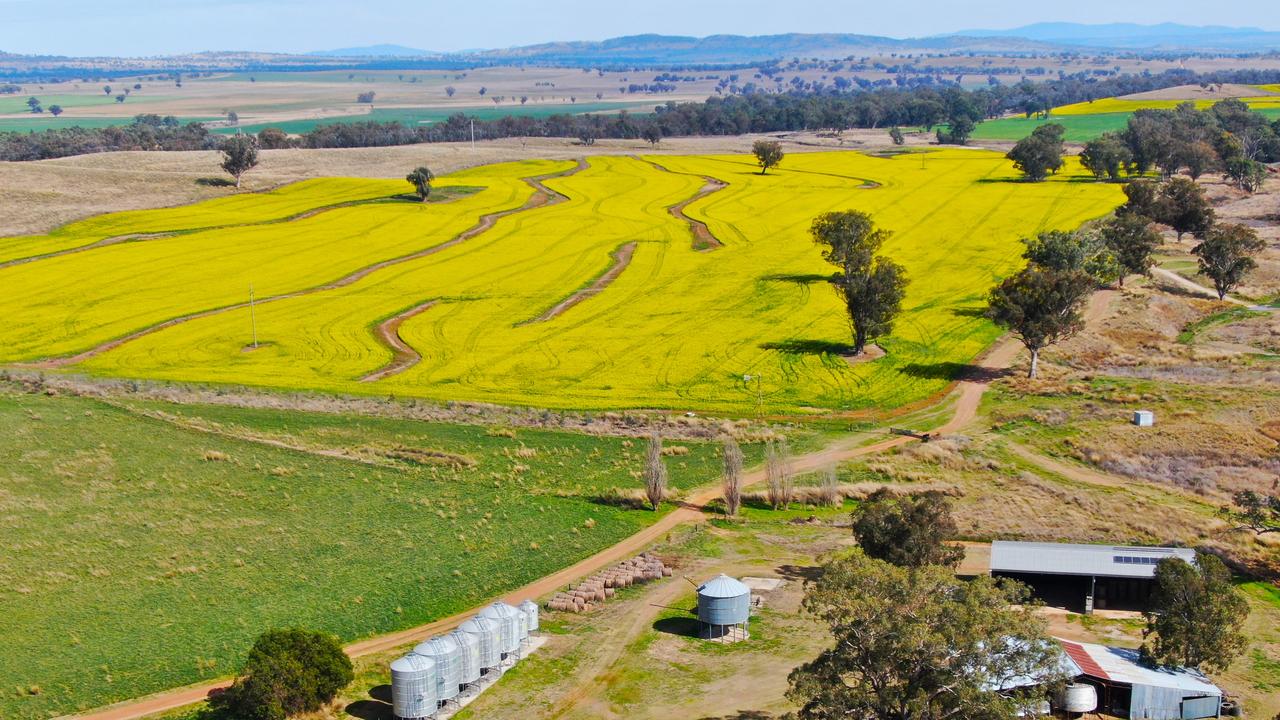Shift in who is buying Australia’s farmland
Australia’s rural property market is being swamped by a host of multi-million dollar listings, and there’s a distinct change in who is interested.

Hundreds of millions of dollars’ worth of rural property has stormed the market as demand for institutional-grade farmland assets steps up a notch.
The rush of premium listings comes as both foreign and domestic corporate investors seize on an opening in the market vacated by softer family demand due to higher interest rates, weaker farmgate commodity returns, particularly for livestock, and concerns about the season.
In the past week:
ONE of Australia’s biggest dairy operators, Tasmania’s Van Dairy Limited, listed its 9500-hectare Woolnorth operations in northwest Tasmania, with price expectations of more than $150 million.
THE meat processing Greenham family has taken to market its 3360-hectare Westmores property, also in northwest Tasmania, which is expected to make more than $70 million.
CANADIAN Fiera Comox-backed Excel Farms offered its 2820-hectare Boorala and 967-hectare Karrara operations in South Australia’s South East and western Victoria respectively for more than $57 million combined.
THE ASX-listed Rural Funds Group listed its Mutton Hole and Oakland Park properties, covering 225,800 hectares of northern Queensland, with price expectations of $50 million.
The listings come as The Weekly Times’ annual Who Owns Australia’s Farms investigation, in AgJournal today, reveals strong competition for institutional-grade farming assets from cashed-up overseas pension and sovereign wealth funds, as well as high net-worth individuals.

Elders Real Estate Victoria and Riverina manager Nick Myer said the major change in the rural property market in recent years was who was buying.
“In 2021 and 2022, interest rates were low and commodity prices were high, and we were seeing larger family operations gearing up and gave the corporates a push,” Mr Myer said.
“The roles have reversed now and the ball is back in the corporates’ court because they have more money that is readily available.”
Mr Myer said while there had been a “reset in (rural property) values” in recent years this was not across the board.
“We are still seeing some really good results but we are operating in a totally different economic climate than we were 12 to 24 months ago,” Mr Myer said.
The listing of the at-times controversial Woolnorth property in northern Tasmania by Chinese businessman Lu Xianfeng is expected to generate significant interest.
Mr Lu purchased Woolnorth in 2016. The sale itself was controversial and in the years following the property was at the centre of animal-welfare concerns. In 2021 it sold 25 dairy farms to Melbourne-based investment vehicle Prime Value Asset Management and 6000 hectares to well-known beef producer TRT Pastoral. Earlier this year it offloaded another 700 hectares to Prime Value Asset Management.
Nutrien agent Tony Maguire, who is handling the Woolnorth sale, described the property as significant with “huge commercial potential”.
“Really you can do anything agricultural and then there is the renewable energy potential as well,” Mr Maguire said. “It’s a historic property and this portion has not been in Australian hands before.”
While the top end of the rural property market is strong, the news is not so promising for lifestyle farms which are proving hard to sell.
Anthony Stevens from Anthony Stevens Real Estate at Geelong said many properties were selling for 20 per cent less than expected prices.
Mr Stevens said after three or four “amazing years”, real estate values had come back in this sector.
He said all farm buyers, whether for big or small enterprises, were doing their numbers carefully but the hardest sector to sell now was for lifestyle purposes.
“There are properties on the market left, right and centre and some vendors are saying they don’t want to come back in price, but they could have sold when the market was much higher,” Mr Stevens said. “We do have active buyers, but they are wanting to operate at 20 per cent less than the listed price.”




